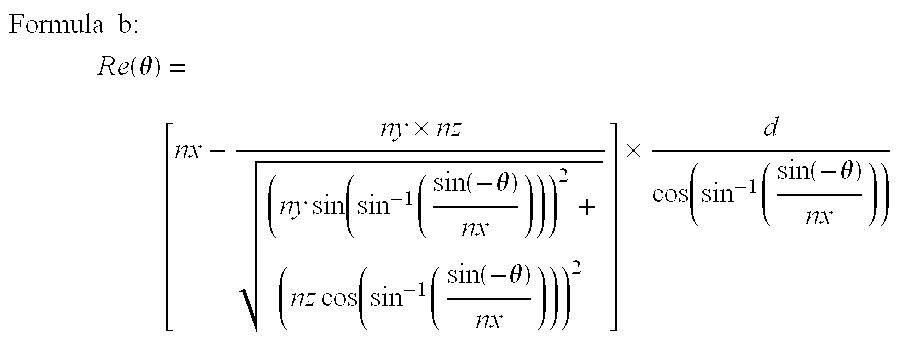Method for Producing Cellulose Acylate Composition and Cellulose Acylate Film
a technology of cellulose acylate and composition, which is applied in the direction of cellulosic plastic layered products, non-metal conductors, polarising elements, etc., can solve the problems of industrially impossible removal of impurities, and achieve the effect of preventing the fragility of the film from being wors
- Summary
- Abstract
- Description
- Claims
- Application Information
AI Technical Summary
Benefits of technology
Problems solved by technology
Method used
Image
Examples
example 1
Synthetic Example 1
(Cellulose Acetate Propionate P-1, P-11)
[0348]10 parts by mass of cellulose (hardwood pulp) and 5 parts by mass of acetic acid were put into a reactor and left at 25° C. for 1 hour (pretreatment). After the reactor was cooled to 0° C., a mixture of 103 parts by mass of propionic anhydride and 1.0 parts by mass of sulfuric acid was prepared, cooled to −10° C., and added to the cellulose that was subjected to the pretreatment in advance all at once. After 30 min, the temperature of the outside of the reactor was increased to 30° C. and the reaction was continued for 4 hours. The reactor was cooled in an ice bath at 5° C. and 120 parts by mass of acetic acid containing 25% of water was added for 30 min. The temperature of the inside of the reactor was increased to 60° C. and agitation was performed for 2 hours. 50% aqueous solution of magnesium acetate tetrahydrate was added in an amount of 10 parts by mass, and agitation was performed for 30 min.
[0349]75 parts by ma...
synthetic example 2
(Cellulose Acetate Propionate P-2, P-12)
[0351]150 parts by mass of cellulose (linter) and 100 parts by mass of acetic acid were put into a reactor and left at 25° C. for 1 hour (pretreatment). After the reactor was cooled to 0° C., a mixture of 1545 parts by mass of propionic anhydride and 10.5 parts by mass of sulfuric acid was prepared, cooled to −15° C., and added to the cellulose that was subjected to the pretreatment in advance all at once. After 30 min, the temperature of the outside of the reactor was slowly increased and controlled to be 30° C. 2 hours after an acylation agent was added. The reactor was cooled in an ice bath at 5° C. and controlled so as to have the inside temperature of 10° C. 5 hours after the acylation agent was added. 120 parts by mass of acetic acid containing 25% water that was cooled to 5° C. was added for 1 hour. The inside temperature was increased to 60° C. and agitation was performed for 2 hours. A solution in which magnesium acetate tetrahydrate ...
synthetic example 3
(Cellulose Acetate Butyrate B-1)
[0354]10 parts by mass of cellulose (hardwood pulp) and 13.5 parts by mass of acetic acid were put into a reactor and left at 25° C. for 1 hour. After the reactor was cooled to 0° C., a mixture of 108 parts by mass of butyric anhydride and 1.0 parts by mass of sulfuric acid was prepared, cooled to −20° C., and added to the cellulose that was subjected to the pretreatment in advance all at once. After 1 hour, the temperature of the outside of the reactor was increased to 27° C. and the reaction was continued for 6 hours. The reactor was cooled in an ice bath at 5° C. and 120 parts by mass of acetic acid containing 25% of water was added for 30 min. The temperature of the inside of the reactor was increased to 60° C. and agitation was performed for 2.5 hours. 50% aqueous solution of magnesium acetate tetrahydrate was added in an amount of 10 parts by mass, and agitation was performed for 30 min.
[0355]75 parts by mass of acetic acid containing 25% of wat...
PUM
 Login to View More
Login to View More Abstract
Description
Claims
Application Information
 Login to View More
Login to View More - R&D
- Intellectual Property
- Life Sciences
- Materials
- Tech Scout
- Unparalleled Data Quality
- Higher Quality Content
- 60% Fewer Hallucinations
Browse by: Latest US Patents, China's latest patents, Technical Efficacy Thesaurus, Application Domain, Technology Topic, Popular Technical Reports.
© 2025 PatSnap. All rights reserved.Legal|Privacy policy|Modern Slavery Act Transparency Statement|Sitemap|About US| Contact US: help@patsnap.com

